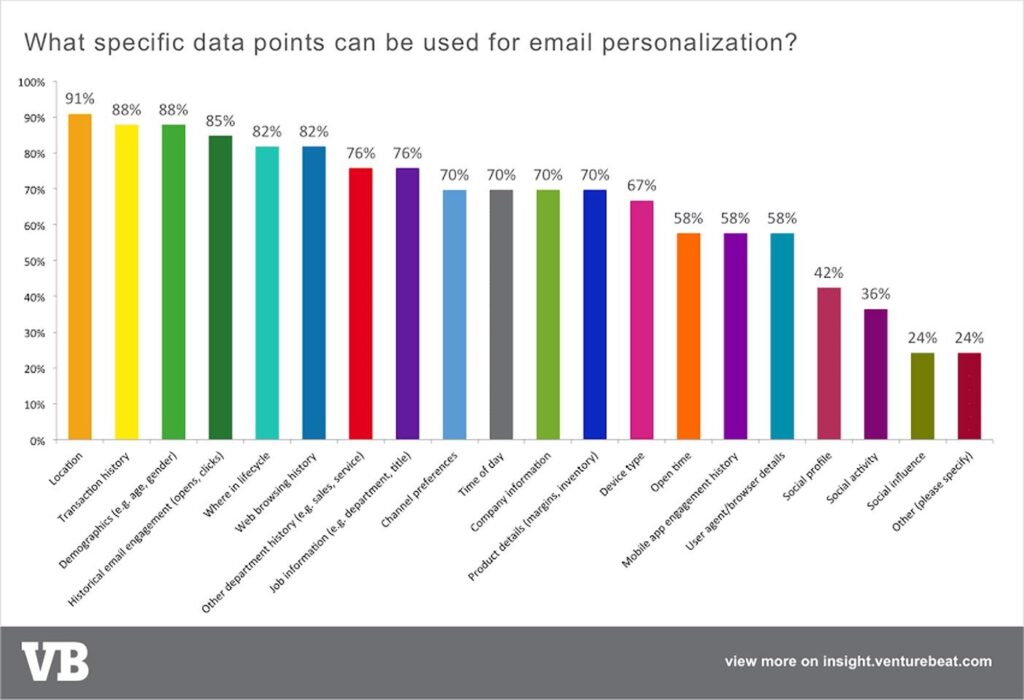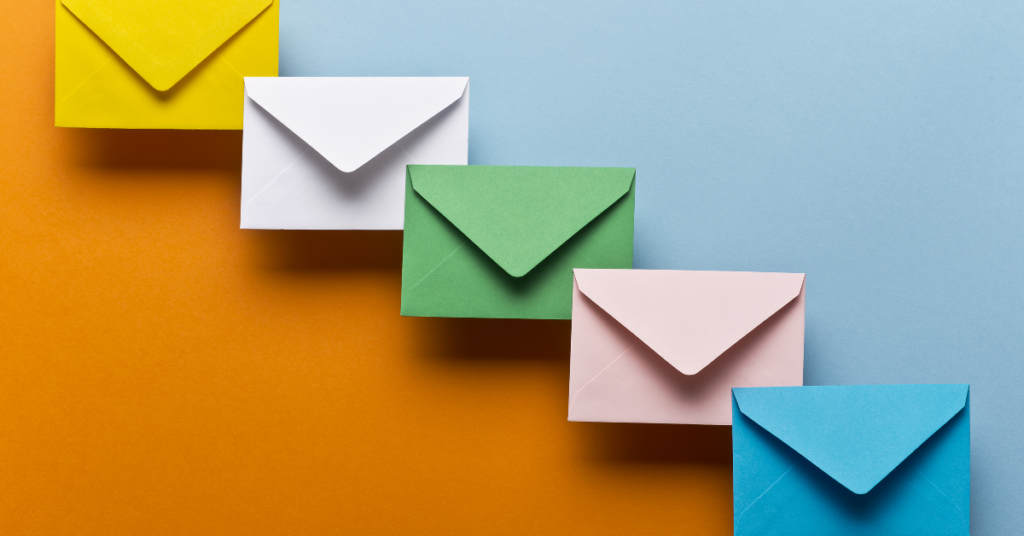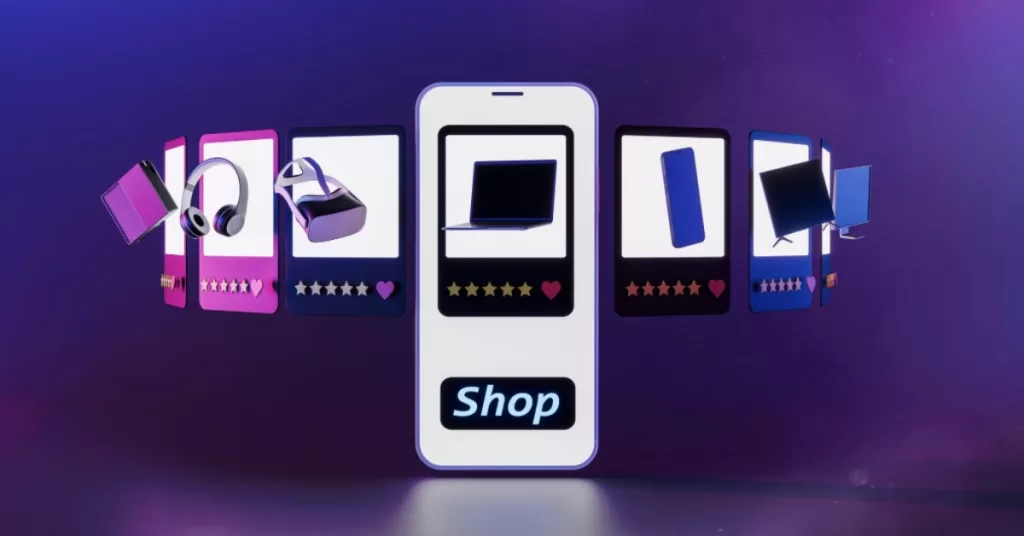Email nurturing is a vital part of any inbound marketing strategy. It is the process of investing in building relationships with your customers for both B2B and B2C brands.
This is also the glue for all your marketing channels because it enhances all your efforts across all the lifecycle stages in the bowtie funnel.
However, only a few companies know how to create an effective email nurturing sequence. Because it seems simple and easy to set up, we tend to underestimate the work it should be put in.
The key to email nurturing
The potential of email marketing is huge. For every £1 spent on email, it generated £42 in revenue. And 4 out of 5 marketers say they would rather give up social media than email marketing.
Just think about the ecommerce businesses that can send out emails to existing clients. They don’t need to use paid traffic to advertise their new collection of products. Or the SaaS businesses launching new features for their tools and platforms.
Even though emails have a tremendous impact on a business’s return on investment (ROI) or marketing efficiency ratio (MER), it is still like chess. It is simple to learn, but extremely difficult to master.
Why? Because writing good, effective emails is not something that anyone can do.
Even before starting to think about an email campaign, you need to get some things straight.
Email nurturing basics
There are some general guidelines when it comes to email nurturing, but I see people frequently skipping on at least one of them.
So let’s check how you can improve your marketing emails and get better results from your campaigns.
Make it personal
Gone are the days when you could just include the name of a person in an email to impress them and make them feel important and appreciated. Today, that is just the bare minimum.
You need to customize your emails based on the data you have from your customers and leads. You need to look at where exactly they are in the customer journey and include as much valuable information as possible.
Keep it short
No one wants to read a long chunk of text after another. You will need to keep it simple, well-structured, and easy to read. Less words are better than more words.
With the amount of information people receive on a daily basis, they will skim the content and read the headlines (maybe you’re doing this right now). So don’t try to include a whole bunch of information in a single email.
Test is on mobile
Most users are reading their emails on their phones. Not testing to see how your email campaign will look on a phone would be a recipe for disaster.
So you have to make sure the content looks great on mobile devices, and the structure is easy to follow and easy to read.
Use empathy
This is the hardest point on this list, but try to imagine how the user would think about your email. Regardless of whether we like to admit it or not, we are driven by emotions. So you can use those emotions to create a sense of connection with your audience.
Put yourself in their shoes for a moment and think if you would buy whatever you’re selling. Or if you would positively perceive the information and think it would help you.
If it sounds bland and unimpressive, that is a sign you need to improve it.
Email nurturing tactics
Now that we have covered the basics of what makes a good marketing email, let’s cover some other aspects of email nurturing. Because an email is good only if it is sent to the right person in the right way, at the right time.
When thinking about email campaigns, take into account the lifecycle marketing principles and think about where is the user in the customer journey. Depending on which phase in the bowtie funnel they are, you want to adapt the information that you’re offering.
The goal of email nurturing is to give as much relevant information as possible while building trust, giving reassurance that your solution is the right one, and addressing any customer objections.
But be careful. Do not fall for the wrong advice that is being spread online. Don’t try to manipulate or rush people into buying something. Don’t create false scarcity, don’t make false claims, don’t overpromise, and don’t try to trick them. Once people realize that, you lose their trust, and your reputation, and you might not be able to recover from that.
Segmentation
With segmentation, you want to split your email contact into smaller and more specific groups. For example, you can split the lists based on whether they have downloaded content from your website, purchased something from your store at any point in time, they have created a trial account, or if they have subscribed to your newsletter.
There are many ways of splitting your contacts into lists, and one contact can be part of multiple lists.
There are a lot of data points you can use to segment your marketing contacts, and some of them are best illustrated below.

The value of content
The type of content you send out in your emails will make or break your campaigns. You have to align it with the user’s level of understanding and trust, and most importantly, to provide value.
If you send out emails that the users deem useless, they will quickly unsubscribe from your marketing lists, or even mark your emails as spam. This will only hurt your marketing efforts and make it more costly in the long run.
So, what type of content is valuable?
The key is to know what you want to communicate for each funnel stage. More on the left side of the bowtie, you want to build trust and educate your audience about the problem they have, and how your product or tool might be a good solution for it.
And the more right you go in the bowtie, the more product/tool details related and more results-oriented your communication should be. You want to tell them about new products, new features, or just share information with them that they will find useful and will inspire them to buy more of what you’re selling.
Personalization
As I previously mentioned, personalization is key. And you have to put in more effort than mentioning the person’s name.
For example, for ecommerce businesses, you have the standard automated emails. Such as the newsletter subscription signup, order confirmation, parcel tracking email, or even an abandoned cart email.
But what can you do after that? Well, you can use segmentation to categorize the contacts in your email list based on their previous purchases. You can have them split by the product category they have bought, the number of orders they have placed, the average order value, etc.
With this information, you can send them personalized emails about new products you have added to your collections, or related products that are frequently bought together with what they have purchased.
For SaaS businesses, things are not so straightforward, unfortunately. Unlike ecommerce businesses, you must spend a lot of time on the left side of the bowtie. This is because the customer journey is longer and the buyer needs much more information before making a decision.
So you will need to gather as much information about your leads as possible. When they subscribe to your email newsletter, you can ask them about the industry they work in, or their position/title.
Suppose they sign up for a free trial of the tool. In that case, you can collect more details such as the name and size of the company they work for, the marketing budgets, the number of employees, or any other important information for your business.
With this data, you can send out much more relevant emails that will help them see the value of your product or service.
Calls to Action
Sending out emails without encouraging the recipients to take action lacks clarity. With email nurturing, you want to give your users all the details they need to move to the next phase in the funnel.
If they are a lead, you want them to sign up. If they are a free trial user, you want them to select a payment plan and activate their account. If they are a customer, you want them to upgrade their account.
So besides the educational info, you want to nudge them towards an action. Your CTAs should be adapted for each lifecycle stage. For demand generation, you can encourage them to download case studies, free guides, industry benchmarks, or whitepapers. For lead capture, you should encourage them to sign up or book a demo.
Your CTAs should be short, concise, and compelling. If possible, you want them to be as close as possible to the ones you are using in your paid advertising assets to preserve consistency.
Conclusion
Email nurturing is a facet of lifecycle marketing that can be extremely beneficial when implemented correctly. This will not only help with increasing your conversion rate through the bowtie funnel but will also increase your overall marketing efficiency.
To create good email nurturing campaigns you have to put yourself in the buyer’s shoes for a moment. Think about what would increase your level of trust and make you confident enough to buy from this company



